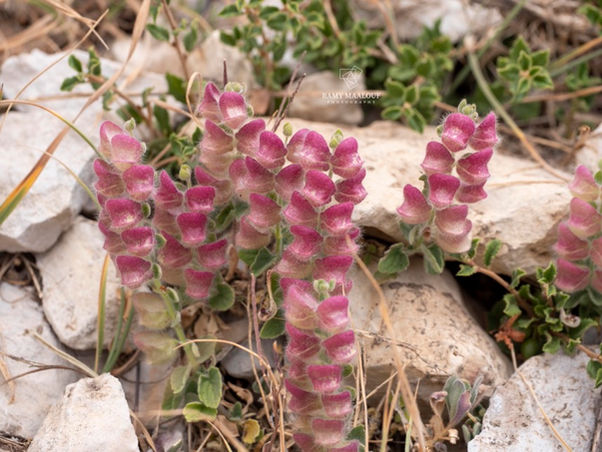Family |
Lamiaceae
Scutellaria utriculata
Labill.
Leb. Syr.
Scutellaria utriculata Labill.
First published in Icones Plantarum Syriae 4: 11 (1812)
(Nouvelle Flore du Liban et de la Syrie, vol. 3, Pl. LI nº 7; 1983)
• Life-form & habit: Perennial herb with fragile, decumbent to ascending branches; stem and branches densely hispid with long, spreading hairs that blacken on drying.
• Leaves: Petiolate, 1–2 cm long, blades truncate or cordate at the base, coarsely crenate-dentate; floral leaves ovate, entire, shortly petiolate.
• Inflorescence & flowers: Flowers arranged in unilateral racemes; calyx strongly accrescent and inflated at fruiting, vesiculose, 10–15 mm, densely hispid. Corolla hispid, purple, almost four times the length of the calyx, blackening when dry.
• Fruit: Nutlets enclosed in the persistent, vesiculose calyx.
• Phenology: Flowers in summer.
• Habitat & elevation: Mountainous and interior regions, often on rocky or grassy slopes; 900 – 1 800 m.
• Lebanese distribution: Recorded by Mouterde in Nahr Ibrahim, ʿAmchit, Bhamdoun, ʿAïn Zehalta, Ehden, Hadeth-Tannourine, Jabal Barouk, Jabal Kneissé, ʿAïn Saouaʿir, ʿAïn Hazir, Cedars of Bcharré, Khan Sannine, Ouadi el-ʿArayech, Mreijatte, ʿAïnata, Zahlé, Yanta, and Mount Hermon.
• Native range: Lebanon, Syria.
• ⚠️ Taxonomic note: A distinctive endemic species within the Levantine group of Scutellaria, easily recognised by its inflated vesiculose calyces, long spreading indumentum, and purple corolla; occasionally confused with S. brevibracteata but differing by its markedly vesicular fruiting calyx and shorter inflorescences












